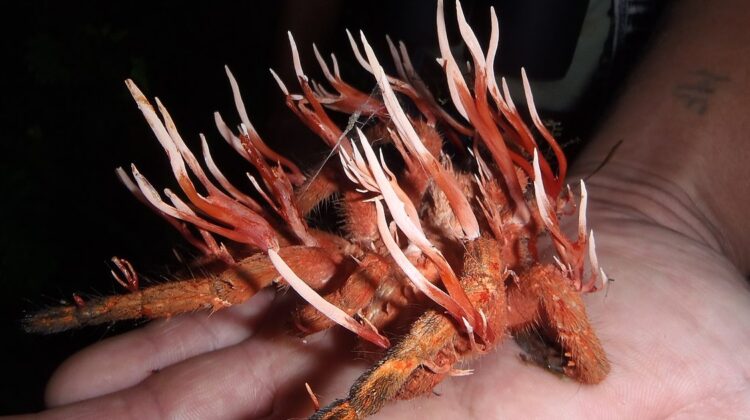
The photo depicts a fascinating example of the natural world – a species of fungus known as Ophiocordyceps caloceroides. This particular species of fungus is parasitic and is known for its unique ability to infect and take over the bodies of insects, using them as a host to reproduce and spread.
Ophiocordyceps caloceroides is a member of the Cordyceps family, which is made up of over 400 species of fungi. These fungi are typically found in tropical and subtropical regions, where they grow on the corpses of insects.
The photo shows a single stalk of the fungus, which has emerged from the body of an insect host. The stalk is topped with a small capsule, which contains the spores of the fungus. When the capsule bursts, the spores are released into the air, where they can infect other insects and continue the cycle of parasitism.

Despite its gruesome nature, Ophiocordyceps caloceroides has been the subject of much scientific research, as it has been found to contain compounds with potential medicinal properties. These compounds are being studied for their potential to treat a range of diseases, including cancer and Alzheimer’s.
The fungus is also of great interest to biologists and ecologists, as it provides a unique example of the interconnectedness of different species in an ecosystem. The parasitic relationship between Ophiocordyceps caloceroides and its insect hosts is just one example of the complex web of relationships that exists in nature, and highlights the importance of biodiversity and conservation efforts.
In summary, the photo of Ophiocordyceps caloceroides is a fascinating glimpse into the intricate workings of the natural world, and provides a unique example of the complex relationships that exist between different species.

Leave a Reply